Fifteen Illinois sites added to National Register of Historic Places
February 13, 2022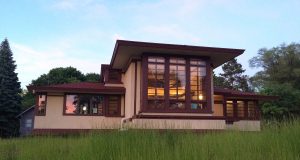
The James B. Irving House in Evanston.
Fifteen sites across lllinois were added to the National Register of Historic Places (NRHP) during 2021, according to the Illinois Department of Natural Resources.
The NRHP-recognized places are scattered across the state and include a 160-year-old farmstead, a tuberculosis sanatorium and a Chicago movie palace.
“Each of these places tells a unique story that is part of Illinois’ rich history. They provide a physical link to the past,” said Natural Resources Director Colleen Callahan. “We are proud to work with local preservationists to obtain national recognition for these historically significant locations.”
Places are added to the register by the National Park Service based on recommendations from the State Historic Preservation Office, a division of IDNR.

The Hobbs Building in Aurora. (Chronicle Media photo)
The National Register of Historic Places is the official list of properties that merit special attention and preservation. Every Illinois county has at least one property or historic district listed in the register. Collectively, they represent a cross section of Illinois’ history from its early settlement to the mid-20th century.
In general, properties must be more than 50 years old to be eligible for listing on the National Register of Historic Places. A listing imposes no obligations on private property owners but does make properties eligible for some financial incentives.
Charles Warrington Earle School, Chicago
The Charles Warrington Earle School in Chicago’s West Englewood neighborhood is an excellent example of a late 19th century Renaissance Revival style primary school.
Pyle-National Company Plant, Chicago
The Pyle-National Company, founded in 1897, built the first reliable electric headlight and generator for steam locomotives. Pyle-National remained a significant Chicago manufacturer until the plant closed in 1992.
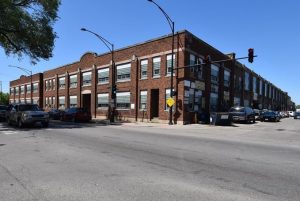
The Pyle-National Company, founded in 1897, in Chicago. (IDNR photo)
Ramova Theater, Chicago
The Ramova featured exterior Spanish courtyards within its lobby and auditorium to produce a foreign and elaborate atmosphere. Built in 1929, it was the only movie palace of this grandeur constructed in the predominately working-class Bridgeport neighborhood.
James B. Irving House, Evanston
The Irving House is significant as a good local example of Prairie School architecture. It was designed by John Van Bergen, a prominent Prairie School architect, in 1928.
Ravisloe Country Club, Homewood
Ravisloe Country Club, an early golf club in the Chicago region, was the area’s first Jewish membered country club. The club is also significant for its architecture and features a Spanish Revival clubhouse designed by George C. Nimmons.
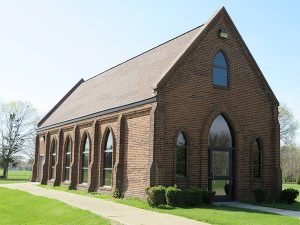
Oakland Cemetery in Princeton. (Photo courtesy of city of Princeton)
Mildred and Abel Fagen House, Lake Forest
The Abel E. and Mildred Fagen House, designed in 1948 by the architectural firm Keck & Keck, is an excellent example of the Modern Movement in residential architecture with Wrightian influences.
Col. George H. Paddock Home, Princeton
The Col. George H. Paddock Home was built in 1903 in the Queen Anne style of architecture with Classical Revival details.
Oakland Cemetery Historic District, Princeton
Founded in 1836, the Oakland Cemetery Historic District is significant for its landscape design and funeral art. Initially a family plot for a local minister, the burying ground later was expanded and eventually established as a community cemetery.
Witwer House, Rockford
Constructed in 1876, the Witwer House is locally significant as an example of the Italianate architectural style with Gothic Revival influences. The property retains its original masonry carriage house.
Shabbona Hotel, Shabbona
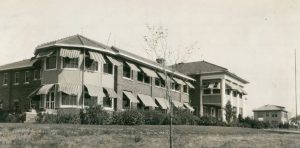
The Fairview Sanatorium in Normal. (Photo courtesy of city of Normal)
As the only hotel in the Village of Shabbona, the Shabbona Hotel played a vital role in the community’s commercial history. The hotel was completed in 1899 and built by local builder John Swanson and his son Joseph.
Jerseyville First Presbyterian Church, Jerseyville
The Jerseyville First Presbyterian Church is significant as an example of Victorian Gothic architecture, which was popular during the mid-to-late 1800s. The church has served as a house of worship continuously since it was built in 1882.
Hobbs Building, Aurora
The Hobbs Building is significant for its eclectic mix of architectural styles. Built in 1895, the monumental brick, limestone and terra cotta commercial building exhibits characteristics of Romanesque, Queen Anne and Exotic Revival elements.
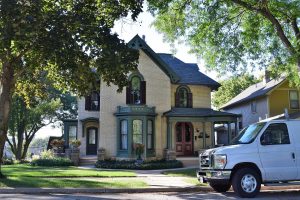
The Witwer House in Rockford (Photo wikimedia)
Pope Brace Co. Building, Kankakee
The Pope Brace Co. Building originally was constructed in 1922 for the Paramount Knitting Co. as a manufacturing and repair facility for the company’s textile machines.
Fairview Sanatorium, Normal
The Fairview Sanatorium was constructed by McLean County to fill a growing need for an adequately sized and well-equipped facility to isolate and treat tuberculosis cases. The building exemplifies the significant history of the methods developed for the treatment of tuberculosis.
Verdurette, New Boston
Verdurette, a historic farmstead in rural Mercer County, is significant for its architecture. The main house was built in 1855 by William Drury, an early non-native settler of New Boston, in the Gothic Revival style.







